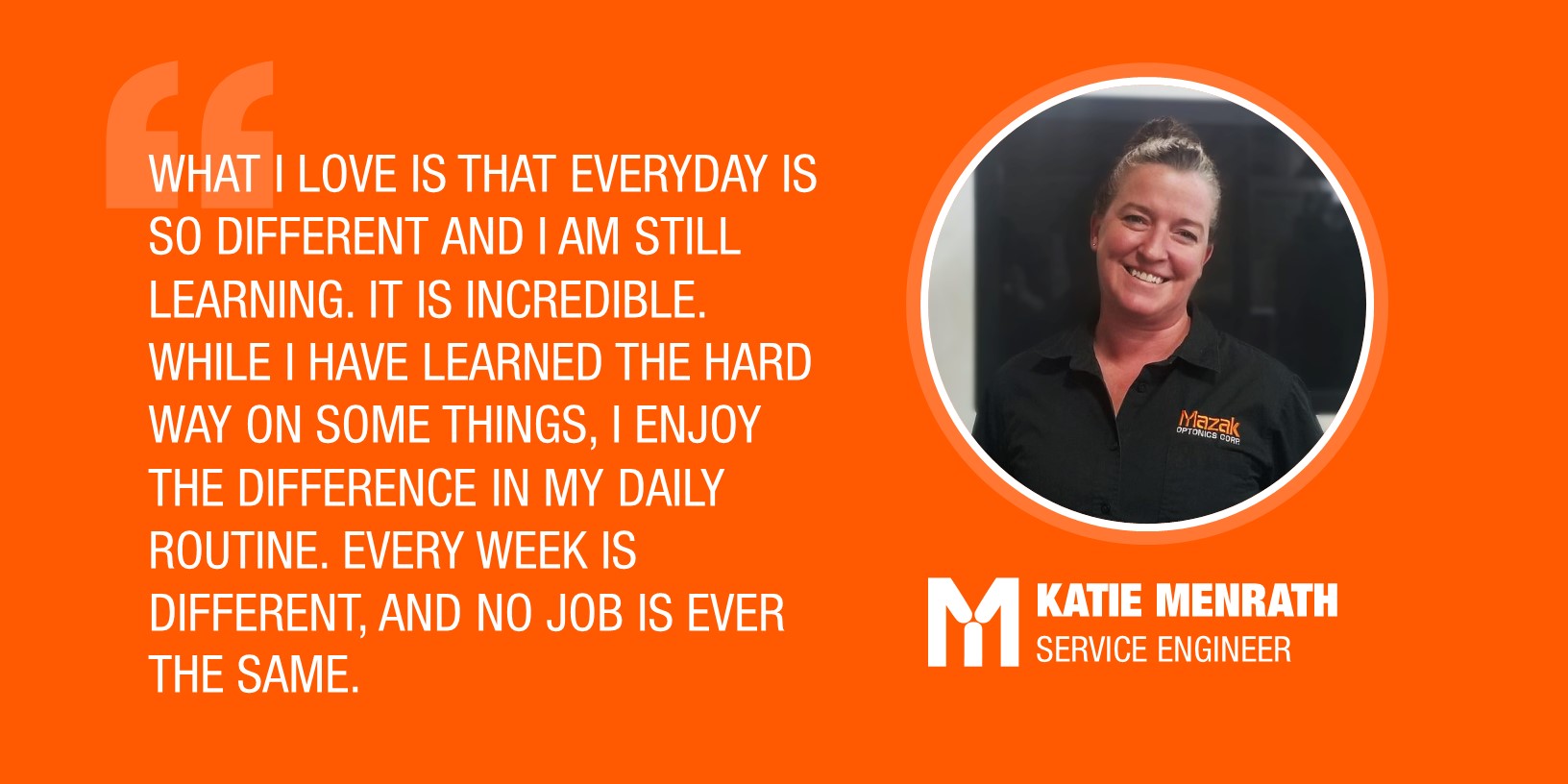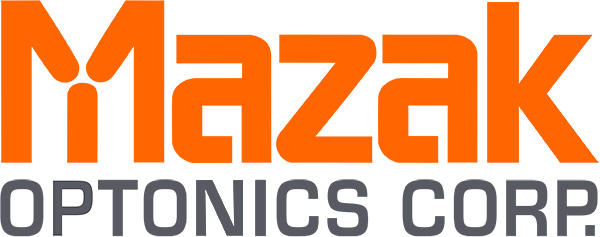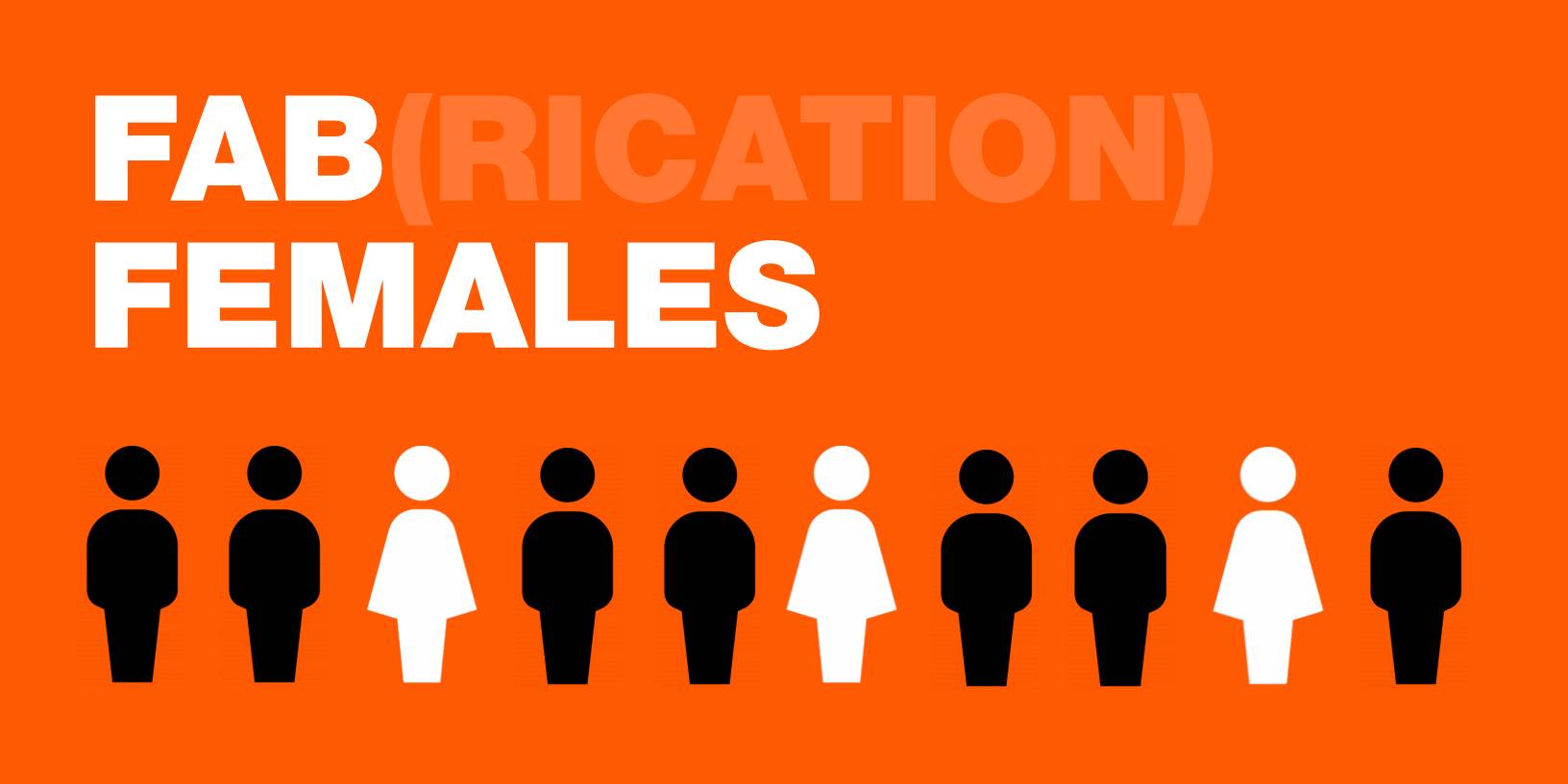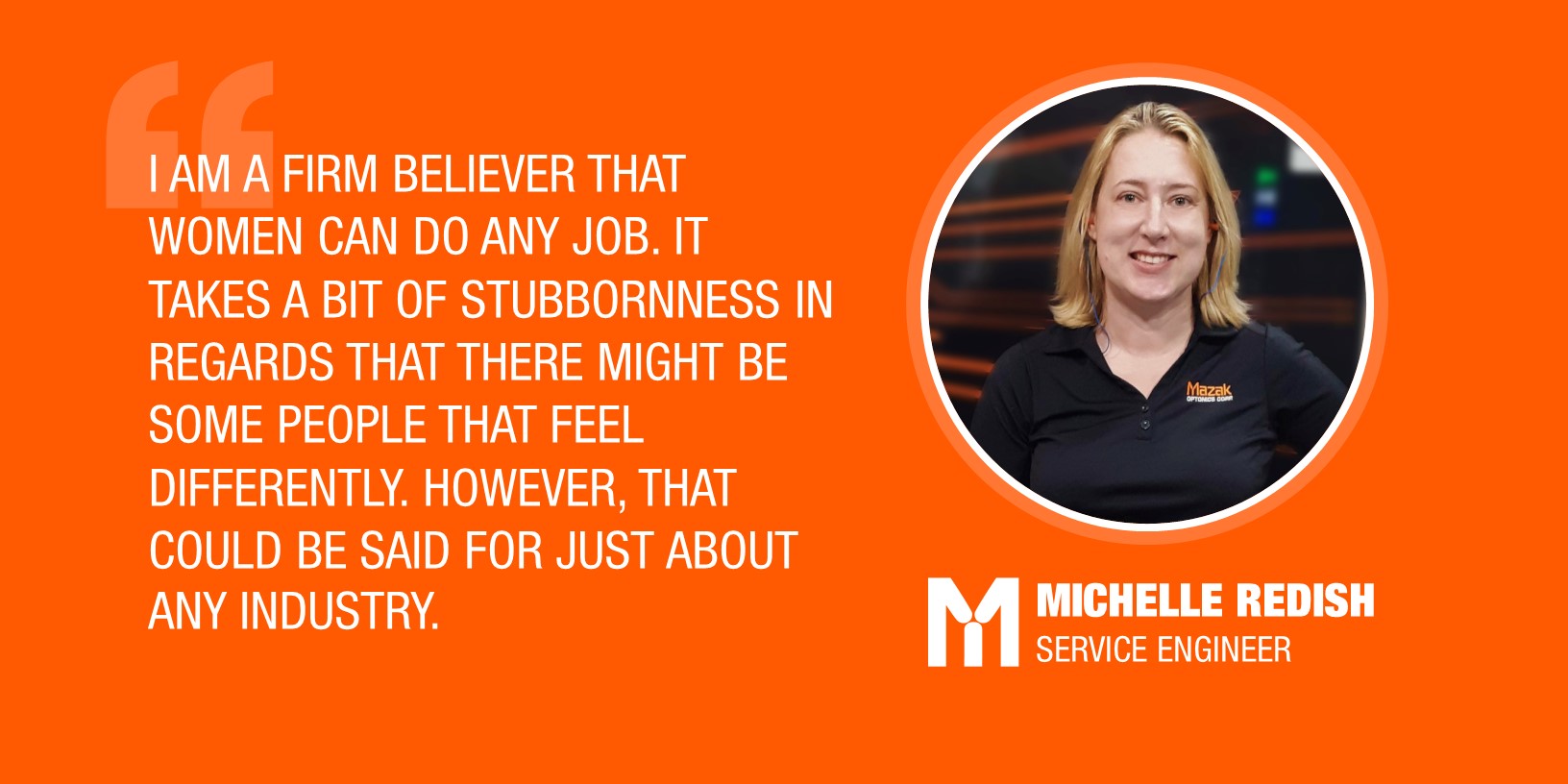How to thrive in the “boys only club” of manufacturing and fabrication
By Kaylee Swearingen, Marketing Manager at Mazak Optonics Corp.
When people think of the manufacturing and fabrication industry, one of the first things that comes to mind is “male-dominated”. While this is accurate, it is important to encourage women to consider careers in manufacturing and fabrication. The skills gap is real, we need more skilled workers, which is why it is necessary to also target women for these career paths.
The 2018 Skills Gap in Manufacturing Study by Deloitte revealed that there may be an estimated 2.4 million positions that go unfilled between 2018 and 2028 with an economical impact of 2.5 trillion. While advanced technologies and robotics can be one solution, another route to take is to tap into an untapped resource, women. Women comprise 47 percent of the US labor force, but only 29 percentage of the manufacturing workforce. Women are mandatory in filling the void that manufacturing and fabrication face with the skills gap.
But how do women get started in the fabrication industry, how do they find success, how can we get more women in fabrication and manufacturing? I talked with two fabrication females at Mazak Optonics Katie Menrath and Michelle Redish about their careers in the fabrication industry to uncover how we can engage and encourage more women to consider these career paths.
Life before fabrication
Usually, people finish high school and are unsure of which career path they want to take. College students are a perfect example of showing that it is normal to change your mind. 80 percent of students in the United States change their major at least once. On average, college students change their major at least three times during their college career. Not starting in fabrication is the exact situation that happened for Menrath and Redish.
A nontraditional career switch is how Katie Menrath transitioned into fabrication. Menrath also started out with a degree in something non-fabrication related. “I have an associates degree in computer information technology from Cincinnati State Technical College. I had worked at Proctor and Gamble as a computer programmer until it was sold to Hewlett Packard.”
But what really struck accord in Menrath was Hurricane Katerina. “I wasn’t happy. I drove past a coast guard recruiting unit and decided I wanted to help. The coast guard was one of the first responders for Hurricane Katerina. I realized the Coast Guard was a way for me to do something bigger, so I decided to enlist,” stated Menrath.
While in the US Coast Guard, Menrath went to electronic electricians’ school and learned about Close-In Weapon Systems. Menrath said, “These are the last defense weapon systems for US Navy and Coast Guard ships and were also used in Iraq and Afghanistan to protect US troops’ camps from incoming fire. I served for 12 years.”
One of the most closely fitting backgrounds into fabrication is Michelle Redish’s, she said, “I have an A.A.S. in Lasers and Photonics from Central Carolina Community College. The biggest reason I got into lasers is I knew I liked math and science but had no desire to be a teacher. Then after taking a tour of the laser program, where they burnt a hole in a brick in less than 10 seconds, I was hooked. I figured if they would trust me with something like that, I was all in.”
But Redish not working with lasers is not where she gained her mechanical experience. Redish stated, “I worked with optics as a laser technician with Northrop Gruman and then Quantel USA. But I left there and joined the US Coast Guard where I gained my mechanical background being a machinery technician.”
It does not matter how you get started. People come from many different backgrounds but with these backgrounds, there is a place for you in fabrication.
Getting started
With such diverse and drastically different backgrounds, what drove these women to manufacturing and fabrication?
For Menrath, a Mazak field service engineer, it was a unique and interesting challenge. “A recruiter found me and thought I would be a good fit. I love traveling but I do want to be home on the weekends. At first, I was not sure about the opportunity but once I came to the Mazak Optonics Elgin Technology Center and saw the showroom, I knew this is what I wanted to do. While being able to travel and the fact that Mazak Optonics offers new, cool technology I thought this would be fun to learn,” said Menrath.

“What I love is that every day is so different and I am still learning. It is incredible. While I have learned the hard way on some things, I enjoy the difference in my daily routine. Every week is different, and no job is ever the same,” said Menrath.
Redish wanted to get back to what she started with. “When I left the military, I went back to working with lasers but I missed traveling. Traveling was not something available at my previous job. I also wanted something where I could apply what I had learned in the Coast Guard with my existing laser knowledge. Mazak has given me that opportunity, while I have my weekends being free to do what I want,” said Redish.
Regardless of where you started, and how you got here, we are happy you are here in fabrication. But how do you become successful not only in fabrication, but in any career? How do you encourage women to choose a job in fabrication or manufacturing?
Mentors matter
When navigating your way through a new career or even your life in general, mentors are important and beneficial. Having someone to encourage and empower is significant especially for women, who are the minority, in the fabrication and manufacturing industry.
Mentors are also beneficial for companies. A research report by Lauren Bidwell, Ph.D., Research Scientist and Experimental Psychologist, shows that having mentoring relationships resulted in significantly higher engagement scores, reduced turnover and improved employee inclusion especially for racial and gender minority employees.
For Redish her mentors have helped her learn by watching. She said, “Every job I have had, I learned from the person assigned to training me and observing others. Somethings can’t be explained but seeing how someone approaches a problem, or the way they hold the tool or optic helps.”
More specifically, Redish expounds, “My mentors would be Gary Beasley who was my laser instructor at Central Carolina Community College. My other mentor has been Jennie Thompson at Quantel USA. Besides those two, my additional mentors have been the other field service engineers at Mazak that have had a hand in training me. As part of Mazak, we learn mostly on the job. Being paired up with a more senior engineer until we feel comfortable.”
With being in the Coast Guard and learning at Mazak, Menrath experienced mentors in both areas. She stated, “I have been fortunate enough that in my Coast Guard career, each chief or supervisor that I had was full of an abundance of knowledge about what I was working on. At each unit, I had another supervisor that I learned from. They all have done my job and knew what I was going through. This was the same with Mazak. I worked with some of the top engineers who helped teach me everything I have learned. We all get by with a little help from our friends is exactly what it is like here with my Mazak family of field service engineers.”
The fun in fabrication
Research by Deloitte found that more than 70 percent of women would stay in manufacturing if they were to start their career today. This truly proves how important it is to explain and offer career opportunities in fabrication and manufacturing to women. While there are limited women in the field, the majority that are, would stay in it if they were to do it all over again. So where is the excitement and fulfillment in fabrication?
Menrath enjoys seeing the bigger overall impact of the job. She said, “What I like most is that I am learning about different metals and how the Mazak lasers make different parts for their own customers and what they do. Visiting each customer, seeing what they and how it is done on a Mazak machine, and how it applies to the real world is great.”
Anyone can do involved in fabrication and that is what is special to Redish. She said, “I like the fact that somebody can have an idea or design and with some programming it can be created. I enjoy the capabilities of fabrication and manufacturing but also the fact that anyone can be a creator.”
The future of fabrication is female
The way we can increase our shrinking skills gap is by encouraging women to take on careers in manufacturing and fabrication. This can be done through fostering a community for women in manufacturing, highlighting successful women and cultivating industry ambassadors.
Menrath and Redish would both recommend a career in the fabrication industry especially women.
“I am a firm believer that women can do any job. It takes a bit of stubbornness in regards that there might some people that feel differently. However, that could be said for just about any industry,” stated Redish.
Menrath agrees, “Yes, I think we need more women engineers. I was told in the coast guard that women pay attention to detail more than men. Women also notice differences quicker in aptitude tests. Women get intimidated by physical labor and I don’t think that should a concern. It is not that bad of a labor-intensive job. People are willing to help me because I am short. Women should not worry about the physical aspect of it.”
Of course, there are a variety of ways fabricators and manufacturers can attract females to join their teams. Some of these ways include: management believing in gender diversity, having women in leadership, prioritizing equal pay, supporting work-life balance, offer competitive parental leave and educating male allies. If these are topics that your company is lacking, it is time to adapt and make changes to attract women.
Not only does hiring women help manufacturers fill their job openings, but it also improves the overall business. The Women in Manufacturing article from Deloitte, mentioned that research shows gender diversity benefits a manufacturing organization through improved ability to innovate, higher return on equity and increased profitability.
What steps will you be taking to engage and empower women in your workplace?


